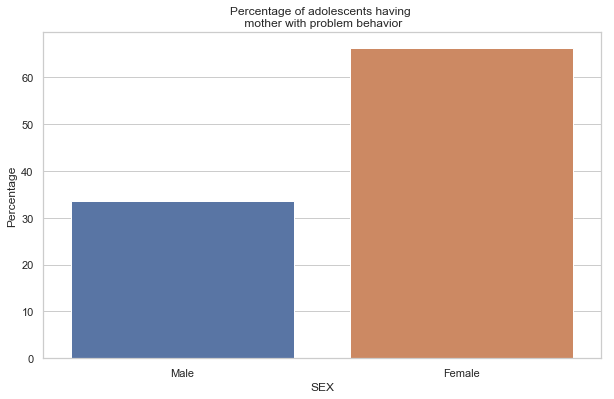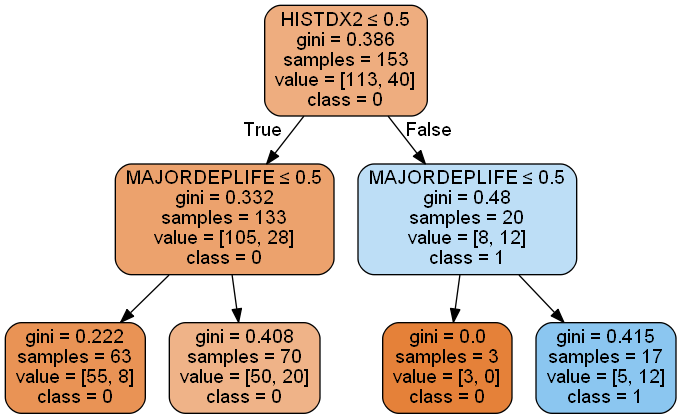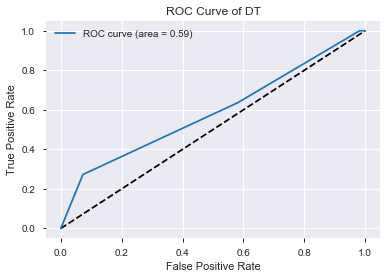Decision Tree Nesarc data (with Python)

Can we predict the antisocial disorder among young girls aged between 18-28 years old?
Bacground
NESARC (National Epidemiologic Survey on Alcohol and Related Conditions) is project from the National Institute on Alcohol Abuse and Alcoholism (NIAAA). It is cross-sectional, based on a nationally representative sample of the civilian noninstitutionalized population of the United States aged 18 years and older.
I choose this study because I am particular interested in the antisocial disorder so I choose all the variables related to the antisocial personality disorder (behavior) and look if there exists an association between them and the family history (iv) of antisocial personality among young girls aged.
A study done by Farrington in 1993[1], concluded that the development of adult social dysfunction depended not only on established causes of antisocial behaviour such as economic deprivation and poor parenting but also on causes of internalizing disorders such as childhood nervousness and social isolation. So probably the family story is related to the antisocial behaviour[2-3]. My hypothesis is that the antisocial behaviour is related to the family status.
What is the percent of girls aged 18 to 28 having blood/natural mother behavior problems?
After subsetting the data with adults having blood/natural mother behavior problems, I found that 66% are girls and 33% are boys.

Decision Tree?
The final data for my study included girls aged between 18-28 years old having a blood/natural mother with behaviour problems (N=330) from the Nesarc data.
Decision tree analysis was used to test nonlinear relationships among a series of explanatory variables such as major depression, generalized anxiety disorder, social phobia, histrionic personality disorder, total family income in last 12 months and a binary categorical response variable which is antisocial disorder. My final subtree included only major depression and histrionic personality disorder as explanatory variables because they were the best contributors to evaluate the antisocial behaviour.
• The accuracy or how often is the classifier correct was 0.82 • the area under the curve (auc) was 0.59
Decision Tree

Roc curve

To conclude
The histrionic personality disorder was the first variable to separate the sample into two subgroups. Young girls with a histrionic personality disorder with a value less than .5 meaning those without histrionic disorder (coded 1 = “YES” and 0 = “NO”) were 116 having also no major depression. Among girls with no major depression(coded 1 = “YES” and 0 = “NO”) and no histrionic disorder 44 of them don’t have antisocial disorder while only 8 do have it. Among girls with major depression(right split) meaning major depression greater than 0.5, 47 have antisocial disorder while only 17 don’t have it.
The two terminal nodes on the right side tell us that among girls with histrionic disorder and major depression 4 don’t have antisocial disorder while 9 have it. And among those with histrionic disorder without major depression only 2 don’t have antisocial disorder and none have it.
References
-
Farrington DP (1993) Childhood origins of teenage antisocial behaviour and adult social dysfunction. J R Soc Med 86 (1):13-17
-
Johnson JG, Cohen P, Smailes E, Kasen S, Oldham JM, Skodol AE, Brook JS (2014) Adolescent personality disorders associated with violence and criminal behavior during adolescence and early adulthood. Am J Psychiatry
-
Lee JY, Brook JS, Finch SJ, Brook DW (2015) An Adverse Family Environment During Adolescence Predicts Marijuana Use and Antisocial Personality Disorder in Adulthood. Journal of Child and Family Studies:1-8
